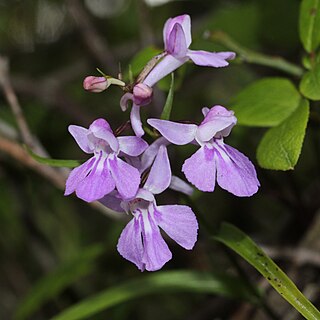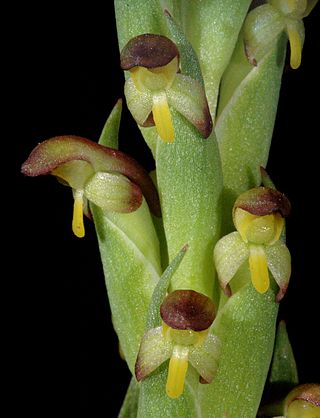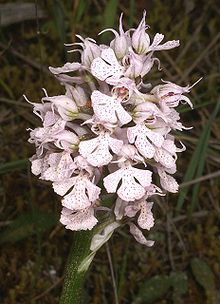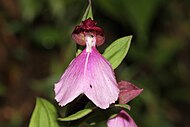
The Pleurothallidinae are a neotropical subtribe of plants of the orchid family (Orchidaceae) including 29 genera in more than 4000 species.

The taxonomy of the Orchidaceae (orchid family) has evolved slowly during the last 250 years, starting with Carl Linnaeus who in 1753 recognized eight genera. De Jussieu recognized the Orchidaceae as a separate family in his Genera Plantarum in 1789. Olof Swartz recognized 25 genera in 1800. Louis Claude Richard provided us in 1817 with the descriptive terminology of the orchids. (See External links below). The next step was taken in 1830-1840 by John Lindley, who recognized four subfamilies. He is generally recognized as the father of orchid taxonomy. The next important step was taken by George Bentham with a new classification, recognizing subtribes for the first time. This classification was first presented in a paper that Bentham read to the Royal Society in 1881. Then it was published in 1883 in the final volume of Genera Plantarum. The next great contributors were Pfitzer (1887), Schlechter (1926), Mansfeld (1937), Dressler and Dodson (1960), Garay (1960, 1972), Vermeulen (1966), again Dressler (1981). and Burns-Balogh and Funk (1986). Dressler's 1993 book had considerable influence on later work.
Manniella is a genus of orchids belonging to the subfamily Orchidoideae.
Ponerorchis camptoceras is a species of plant in the family Orchidaceae. It is endemic to the Sichuan region of China.
Tsaiorchis is a genus of flowering plants in the family Orchidaceae.

Ponerorchis is a genus of Asian terrestrial tuberous orchids. It is native to temperate Eurasia, from Poland to Japan, to the north of the Indian subcontinent and to northern Indochina.
An alliance is an informal grouping used in biological taxonomy. The term "alliance" is not a taxonomic rank defined in any of the nomenclature codes. It is used for any group of species, genera or tribes to which authors wish to refer, that have at some time provisionally been considered to be closely related.
Galeottiella is a genus of flowering plants from the orchid family, Orchidaceae. Traditionally it had been included in subtribe Spiranthinae, but following molecular phylogenetic and morphological studies it is now placed in a subtribe on its own, Galeottiellinae.

Dendrobieae is a tribe in the subfamily Epidendroideae, in the family Orchidaceae. The Dendrobieae are mostly tropical, epiphytic orchids which contain pseudobulbs.

Orchideae is a tribe of orchids in the subfamily Orchidoideae. Historically, it was divided into 2 subtribes, Orchidinae and Habenariinae. The subtribe Orchidinae alone contains about 1,800 species. However, although some phylogenetic studies have established the monophyly of the subtribes, the generic boundaries are unclear, with many genera as traditionally circumscribed being paraphyletic or even polyphyletic. Species of genera such as Habenaria and Platanthera have been placed into both subtribes. A 2017 molecular phylogenetic study found that both subtribes did form clades, but did not formally recognize Habenariinae, because of missing genera and uncertainty over generic boundaries. The Asian species of Orchideae, in particular, have been subject to repeated changes of generic placement from 2012 onwards.

Diseae is an orchid tribe in the subfamily Orchidoideae. It was recognized in Genera Orchidacearum volume 2, which was published in 2001. It consisted of 12 genera in five subtribes. In molecular phylogenetic studies that were published after 1999, it was shown that Diseae is paraphyletic over the tribe Orchideae. In a classification of orchids that was published in 2015, Diseae was not recognized, but was instead placed in synonymy under Orchideae.

Coryciinae is a subtribe of orchids that has been differently defined and placed in the two classification systems that are currently in use for orchids. Genera Orchidacearum, which is currently the definitive work on orchid taxonomy, delimits Coryciinae as consisting of five genera: Disperis, Evotella, Ceratandra, Pterygodium, and Corycium, and it places Coryciinae in the mostly African tribe Diseae, along with four other subtribes: Brownleeinae, Huttonaeinae, Disinae, and Satyriinae. The genera of Coryciinae are small to medium in size and the number of species in each genus is as follows: Disperis (78), Pterygodium (19), Corycium (15), Ceratandra (6), and Evotella (1).

Disinae is a subtribe of orchids that has been differently defined and placed in the two classification systems that are currently in use for orchids. Genera Orchidacearum, which is currently the definitive work on orchid taxonomy, delimits Disinae as consisting of two closely related genera, Disa and Schizodium, and it places Disinae in the mostly African tribe Diseae, along with four other subtribes: Brownleeinae, Huttonaeinae, Coryciinae, and Satyriinae. In the classification for orchids that was published by Chase et alii in 2015, Schizodium was placed in synonymy under Disa, while Pachites and Huttonaea were transferred to Disinae. In Genera Orchidacearum, Pachites and Satyrium form the subtribe Satyriinae, and Huttonaea is the sole genus in the subtribe Huttonaeinae. The transfer of Pachites and Huttonaea to Disinae by Chase et alii (2015) was done with considerable doubt, and was based upon uncertainty about the relationships of these two genera. In 2009, a molecular phylogenetic study found only weak statistical support for a sister relationship between Huttonaea and Disa.
Platanthera carnosilabris is a species of flowering plant in the orchid family Orchidaceae, native to south-central China.
Ponerorchis basifoliata is a species of flowering plant in the family Orchidaceae, native to south-east China.
Ponerorchis farreri is a species of flowering plant in the family Orchidaceae, native from south-east Tibet to south-central China.
Ponerorchis gonggashanica is a species of flowering plant in the family Orchidaceae, native to south-central China.
Ponerorchis tibetica is a species of flowering plant in the family Orchidaceae, native to south-east Tibet to south-central China.
Ponerorchis compacta is a species of flowering plant in the family Orchidaceae, native to south-central China.
Shizhenia is a genus of flowering plants in the family Orchidaceae. Its only species is Shizhenia pinguicula, native to south-east China.












